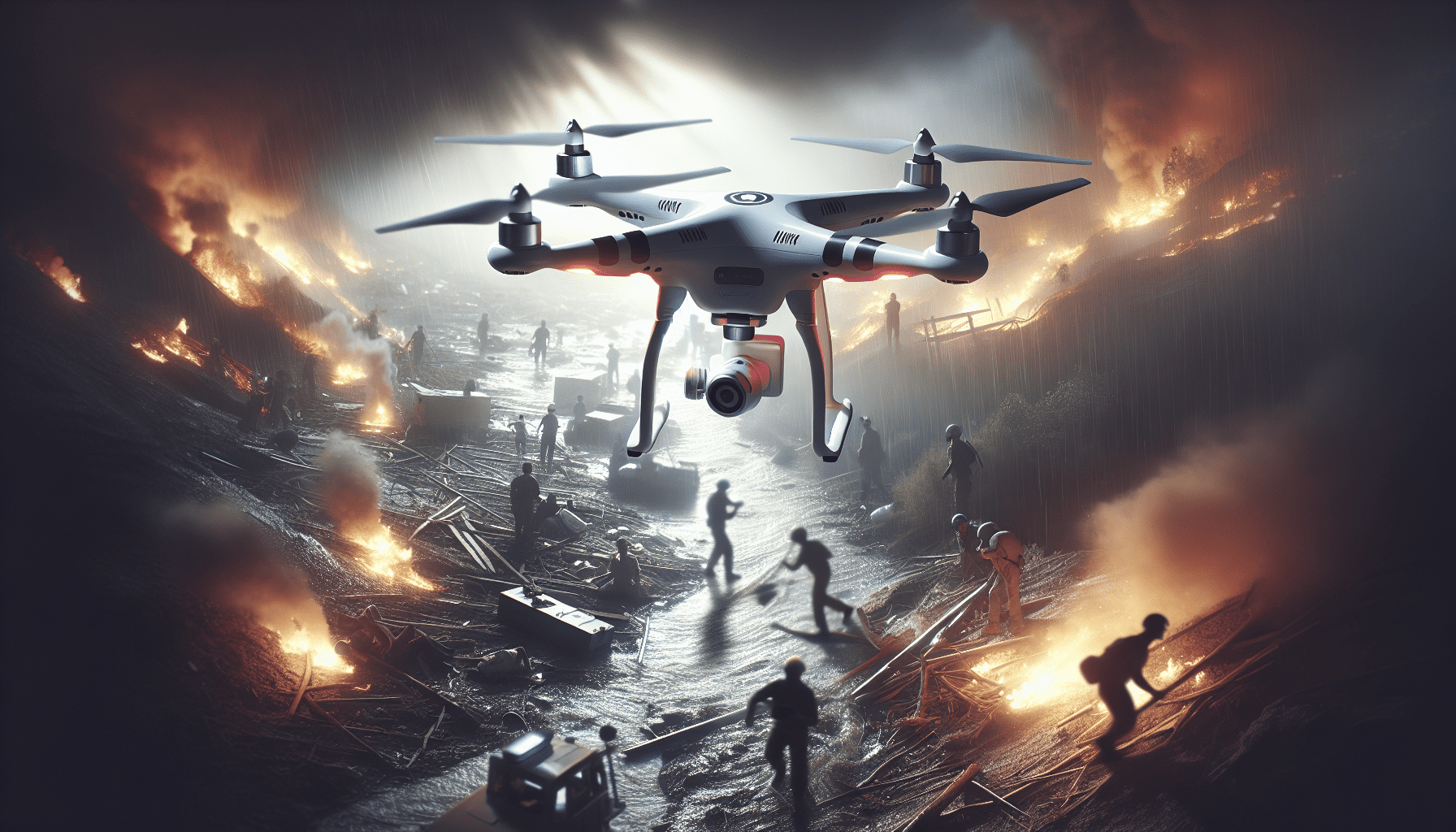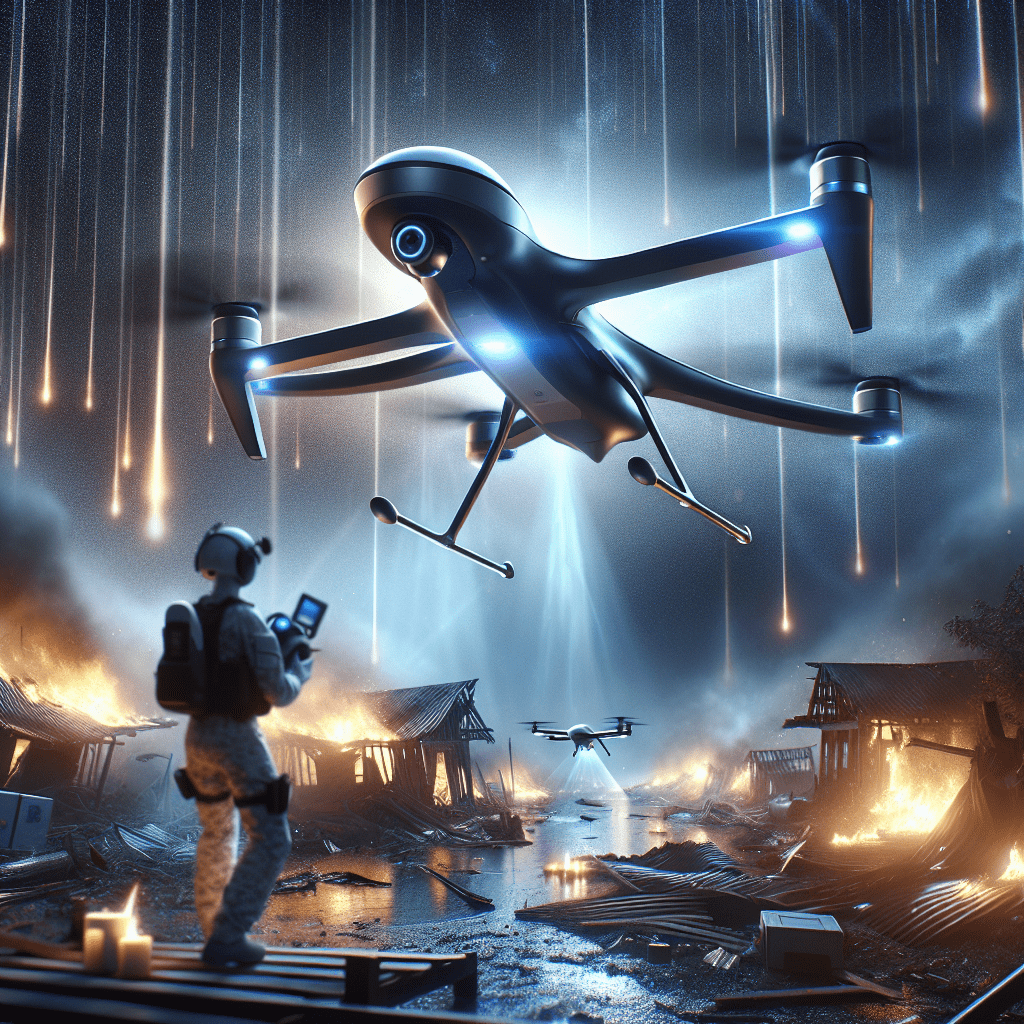Understanding the Role of Drones in Disaster Response
Drones are essentially unmanned aerial vehicles (UAVs) that can be remotely controlled or fly autonomously using software. They have seen widespread adoption in disaster response owing to their inherent capabilities. First and foremost, drones provide critical aerial perspectives that can be invaluable in the immediate aftermath of a disaster. For instance, following an earthquake, satellites might not be able to capture real-time images due to cloud cover, but drones can fly under such conditions, offering timely intelligence. The speed at which they can be deployed is crucial, potentially making the difference between life and death.
Remote Location Access
Drones possess the unique ability to access locations that may be dangerous or unreachable by traditional means. In disasters such as floods, landslides, or wildfires, emergency personnel often face hazardous terrain that could delay response times. For example, after the devastating floods in Kerala, India in 2018, drones were used to map the affected areas, providing rescue teams with detailed images of submerged streets and inaccessible villages. This immediacy not only helps locate survivors but also determines which areas require urgent assistance.
Data Collection and Analysis
Data collection forms a core function of drone operation during emergencies. Advanced image capturing technologies, including thermal imaging and high-resolution cameras, enable drones to gather essential geographic and infrastructural data. This data can be analysed to assess damage, monitor environmental conditions, and even track the movement of disasters like wildfires. For instance, drones equipped with thermal imaging can identify hotspots during firefighting operations, allowing for more effective resource allocation and quicker containment strategies. Depending on the complexity of the incident, drones can transmit this data in real-time, facilitating faster decision-making processes and optimising emergency response efficiency.

The Technologies Behind Drones in Emergency Response
The surge in drone usage for disaster response is not just due to their manoeuvrability but largely attributable to the evolving technology that powers them. Integrating advanced imaging technologies and data processing capabilities allows drones to perform complex tasks efficiently, even in perilous environments. Many drones now boast GPS and LiDAR technology, enhancing precision and mapping capabilities significantly.
Imaging Technologies
Various imaging technologies play pivotal roles in how drones assist during emergencies. High-resolution optical cameras provide clear day-time images, while thermal lenses come into action during low-visibility conditions, such as smoke-filled areas or at night. Additionally, LiDAR technology can produce three-dimensional maps by measuring distances using laser pulses, which can be particularly beneficial in relief operations by giving responders a clearer view of affected structures and terrain. The integration of these technologies deeply enhances the operational capabilities of drones and their potential utility in disaster-stricken areas.
Communication Systems
Drones often carry advanced communication systems enabling them to relay information back to command centres promptly. This connectivity is vital in ensuring that rescuers and emergency personnel are equipped with the latest information regarding disaster impact, allowing for informed decisions regarding resource deployment. For instance, in the aftermath of a natural disaster like a hurricane, drones can fly through affected regions and provide live feeds to agencies coordinating disaster response, effectively facilitating real-time communications that traditional networks may fail to support due to damage.
Case Studies: Successful Implementations of Drones in Disaster Management
Numerous instances demonstrate the successful implementation of drones in disaster management, showcasing their versatility and effectiveness. One prominent example involves the response to the 2020 Australian bushfires, which devastated vast expanses of land. Drones equipped with thermal imaging technologies were deployed to locate hotspots, track fire spread, and assess damage to the ecosystems and wildlife. This information proved invaluable in strategy formulation and resource allocation, ultimately helping to prioritise areas in need.
Humanitarian Missions: The Nepal Earthquake Response
Following the catastrophic earthquake in Nepal in 2015, drones were deployed to assist in the humanitarian response. They provided critical aerial maps for search and rescue operations, enabling responders to identify the most affected areas swiftly. Moreover, drones were instrumental in delivering medical supplies to remote locations cut off from access due to damaged infrastructure. This application of drones showcased their capacity not just to assist in logistics but also to save lives by reaching those in dire need.
Innovative Industry Applications
Beyond humanitarian efforts, the agricultural sector has also embraced drones to enhance disaster response capabilities. In times of drought or flooding, drones can assist farmers by providing data on crop health and soil moisture levels. Applying this technology allows farmers to react promptly to changing conditions, ultimately serving as a preventative measure against crop failure. In this vein, they effectively bridge the gap between emergency response and the proactive planning necessary to combat the impacts of climate change on agriculture.
“The integration of drones into disaster management systems is not just about innovative technology; it is about enhancing human capacity to respond effectively to crises.”
Challenges and Ethical Considerations in Drone Usage
While drones significantly enhance disaster response, their use is not without challenges. Regulatory issues pose one of the primary barriers, as many regions have stringent laws surrounding drone operations. Navigating these regulations can complicate emergency response efforts, especially when real-time action is critical. Furthermore, the public’s perception of privacy concerns with drone surveillance can sometimes hinder their adoption.
Safety and Reliability Issues
Another critical aspect is the reliability of drones during emergencies. Malfunctions can occur due to various factors, including battery failure, signal loss, or extreme weather. To mitigate such risks, it is essential that robust programming and fail-safes are integrated into drone designs. Additionally, training for operators is paramount to minimise errors during high-tension scenarios, as lapses can lead to detrimental outcomes.
Ethical Use of Drones
Furthermore, ethical considerations regarding the use of drones in disaster response must not be overlooked. Ensuring that drones are employed with respect to privacy and humanitarian principles is crucial. Ethical deployment aligns with broader considerations of respecting affected individuals while providing vital assistance. Conversations revolving around these ethical dilemmas will continue as drone technology evolves, pushing stakeholders to establish guidelines ensuring responsible usage in sensitive scenarios.
The Future of Drones in Disaster Management
The future of drones in disaster management looks promising, marked by advancements in technology offering enhanced operational capabilities. As drone technologies continue to evolve, we can expect improved autonomy, artificial intelligence integration, and advancements in collision avoidance systems. Such features will enable drones to operate more effectively in complex environments.
Collaboration and Integration
Future initiatives may also focus on integrating drones with other technologies to streamline disaster response even further. For example, pairing drones with ground-based robots could optimise search and rescue operations, allowing drones to conduct aerial surveys while ground units perform direct interventions. These collaborative approaches will improve efficiency and efficacy in disaster response, ensuring organisations can provide timely and effective assistance.
Global Accessibility and Training
Moreover, as drones become increasingly accessible due to decreasing costs, more regions worldwide will have opportunities to harness their potential. Training programmes will be essential in ensuring that personnel are prepared to use drone technology effectively. By investing in training and capacity-building initiatives, regions vulnerable to disasters can significantly enhance their resilience and response capabilities.
Conclusion: Embracing the Drone Revolution
In conclusion, drones are revolutionising disaster response by enhancing access to critical information, improving transmission of real-time data, and aiding in logistics and supply delivery in catastrophic environments. Their versatile applications across various disaster scenarios demonstrate the immense potential of drone technology in saving lives and hedging against the aftermath of unforeseen calamities. As these technologies continue to evolve, it is imperative to embrace their integration, ensuring ethical, efficient, and effective utilisation in disaster management. Drones are not just tools; they represent a paradigm shift in how we approach crisis situations, ultimately making our responses more effective and timely. To discover how our cutting-edge drones can enhance your disaster response capabilities and save lives, learn more about our product range today!
Frequently Asked Questions
How are drones used in disaster response?
- Drones are used in disaster response to conduct aerial surveillance, deliver supplies, assess damage, and assist in search and rescue operations.

